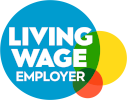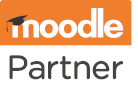Manage Your Moodle
Manage Your Moodle
Manage Your Moodle
How to keep your Moodle site fresh
A positive Moodle user experience is all about presentation. From theme to course format, branding to signposting, first impressions are important.
But it’s not just learners who are impacted by an out-of-date interface – administrative activities will be awkward and inefficient if you’re not taking advantage of all the functionality available. The longer you leave it, the bigger the refresh job gets, so here’s how to make checks a manageable part of your routine.

Schedule Moodle MOTs
Regular digital health checks (i.e. Moodle MOTs) are essential to maintaining an organised, user-friendly e-learning platform. Manageable as a DIY activity, include them periodically as part of an annual routine to make sure everything stays working as expected.
This includes data efficiency (as your hosting costs might be higher than necessary if things are disorganised behind the scenes), and the main data bloat culprits are covered here.
Book a full Health Check
Particularly if it’s been a while since your last version upgrade, book an ELD Health Check. Covering scaffolding, plugins, infrastructure and more, Health Checks come with an actionable report for helping plan next steps, and a comprehensive list of recommendations for what needs to be done to bring your site up to date.
Alternatively, if you want your Moodle refresh to be fast and efficient, plan it as a project. With a Refresh Combi, you get a Health Check + Project Support as part of the deal, and kickoff can be scheduled within 48 hours of report delivery.
Organise a refresh UAT
If your refresh is part of a version upgrade, particularly if you prefer to stick to LTS versions, there will likely have been some significant improvements in feature or functionality since your last one. Being able to explore the new options and make decisions about configuration changes in a staging environment/UAT (i.e., a clone of your live site with/without user data for testing) gives you the freedom to thoroughly check the learner journey before making it live, and absolute control over the end result.
Main con? Additional cost if you’re a) on a shared hosting agreement or b) don’t have the GB available on your dedicated server. But! The extra cost is only a temporary expense, as once you’re happy with your refresh and ready to take it live, your UAT can be deleted, and you’re back to your standard agreement.
The pros are a much longer list, but highlights include:
- New plugins, formats and functionality can be tweaked and compared in private until you’re happy with the result;
- Progression can be made to a timeline of your choosing, so any paid-for support can be staged for budget control; and
(most important of all)
- There will be no impact on active users as you work, as all changes, updates, and testing are in a private environment, only accessible to the users you choose.





